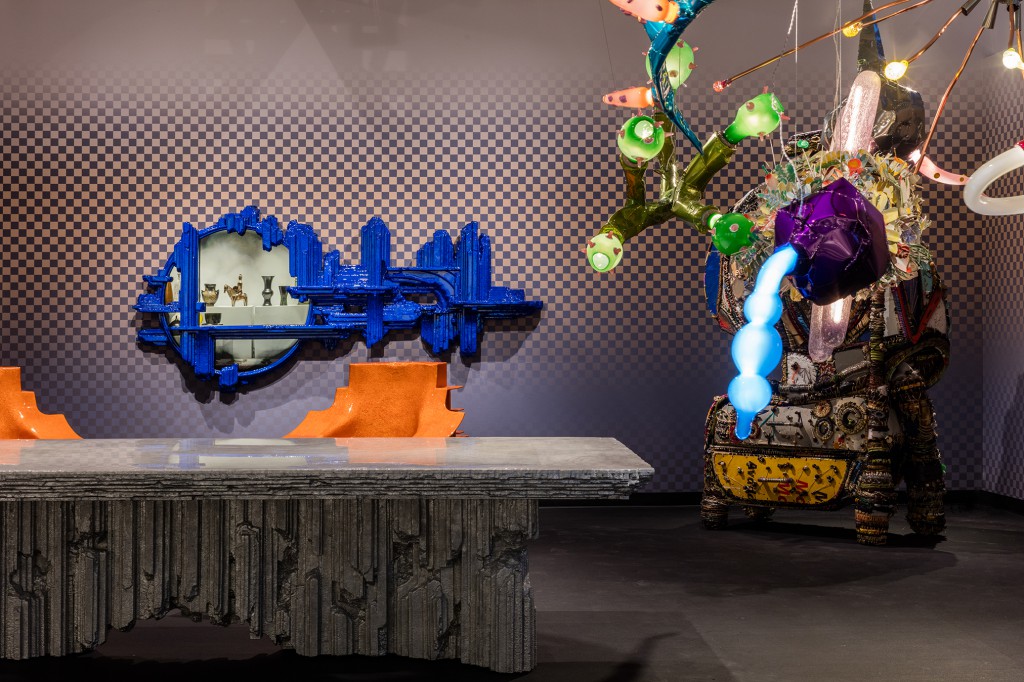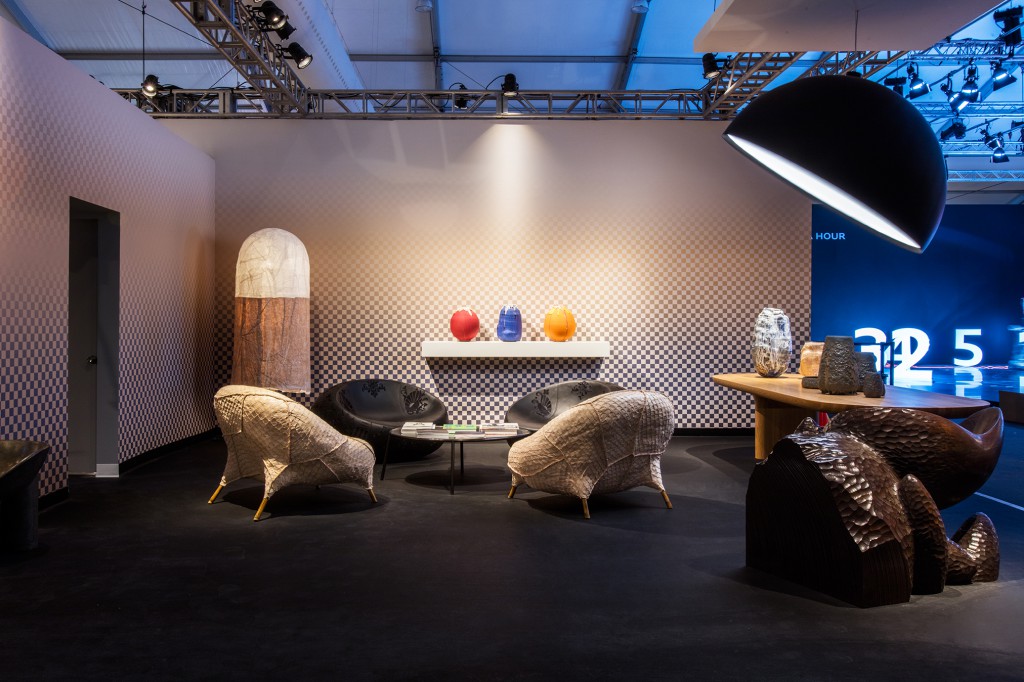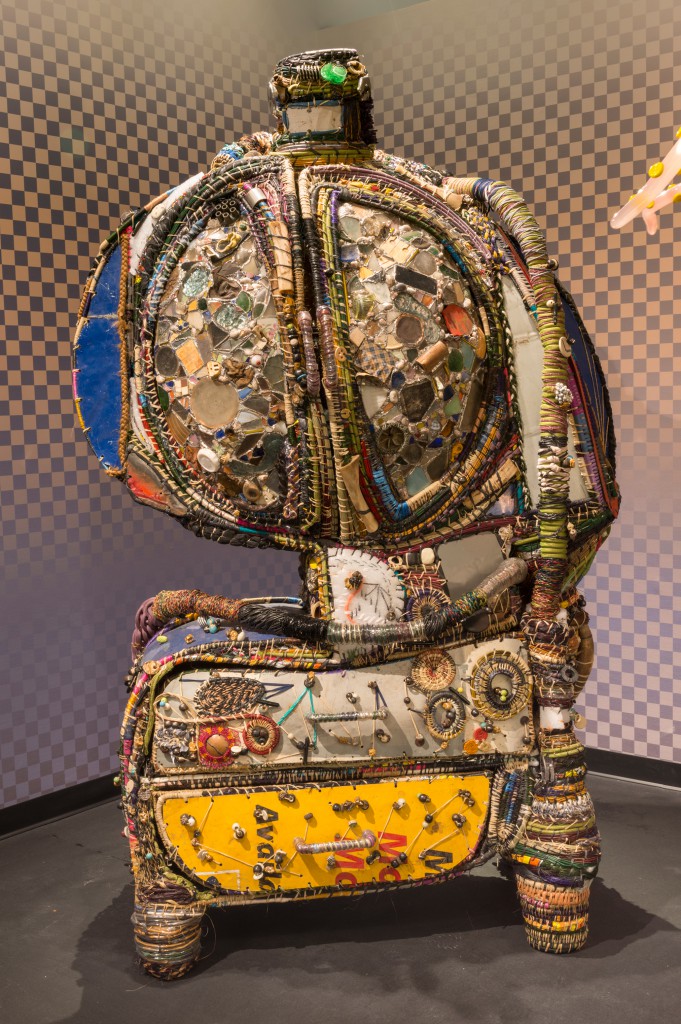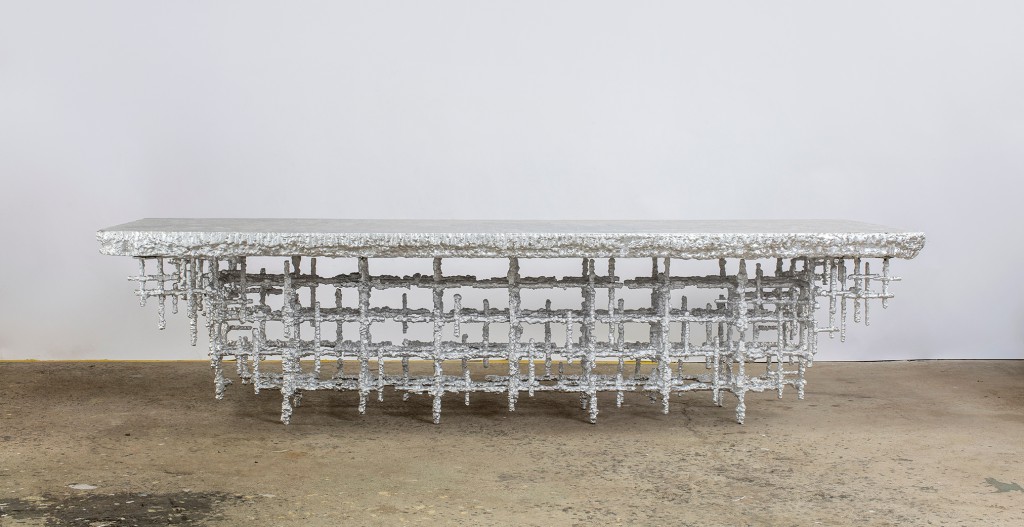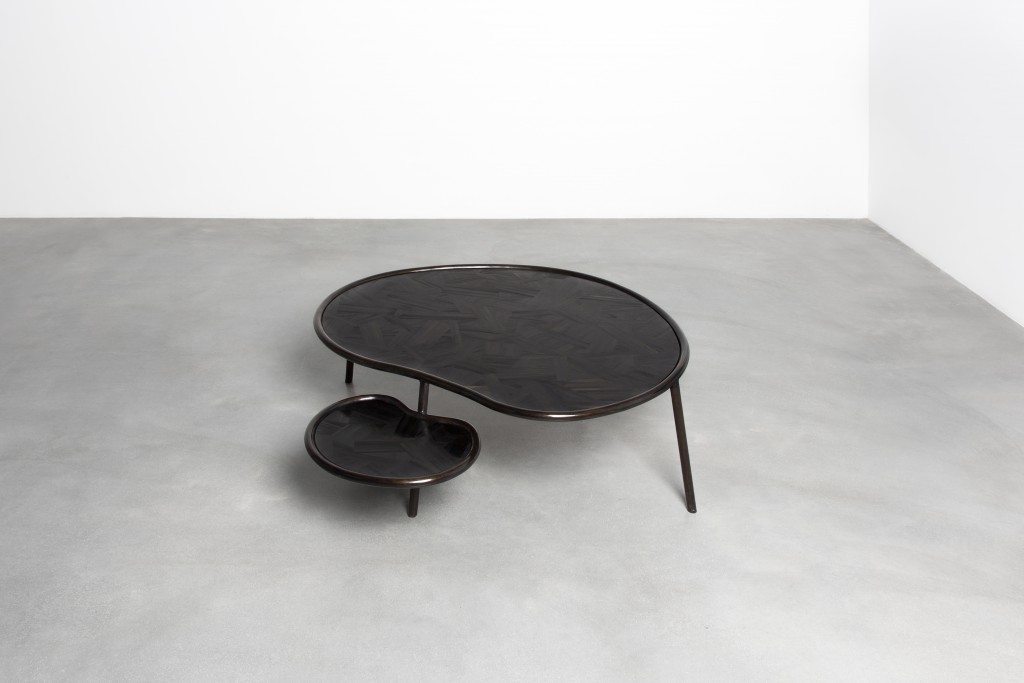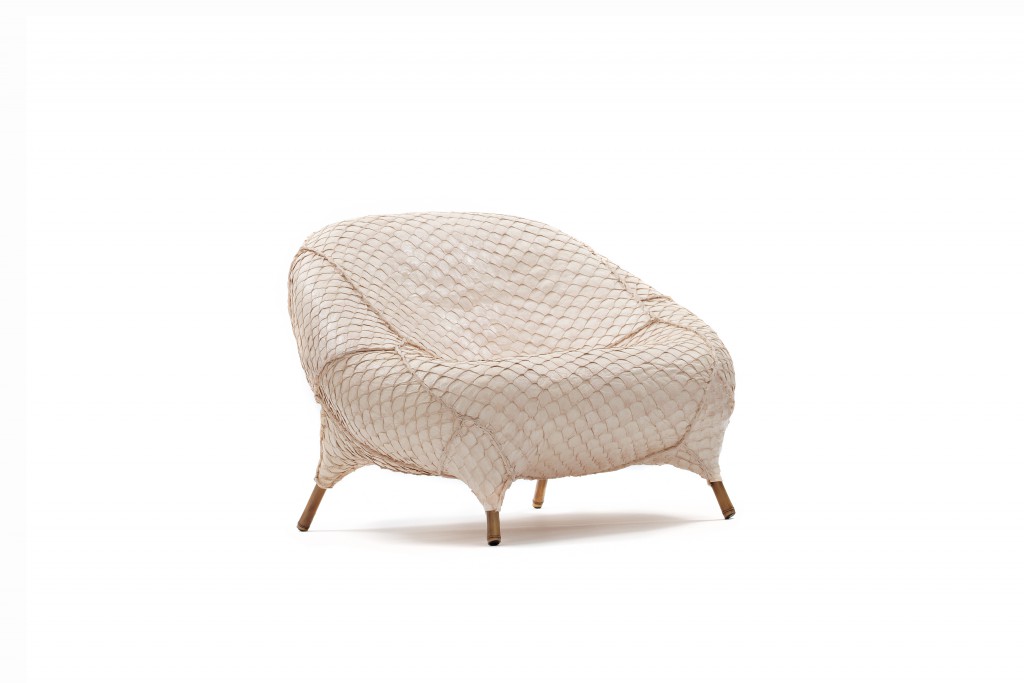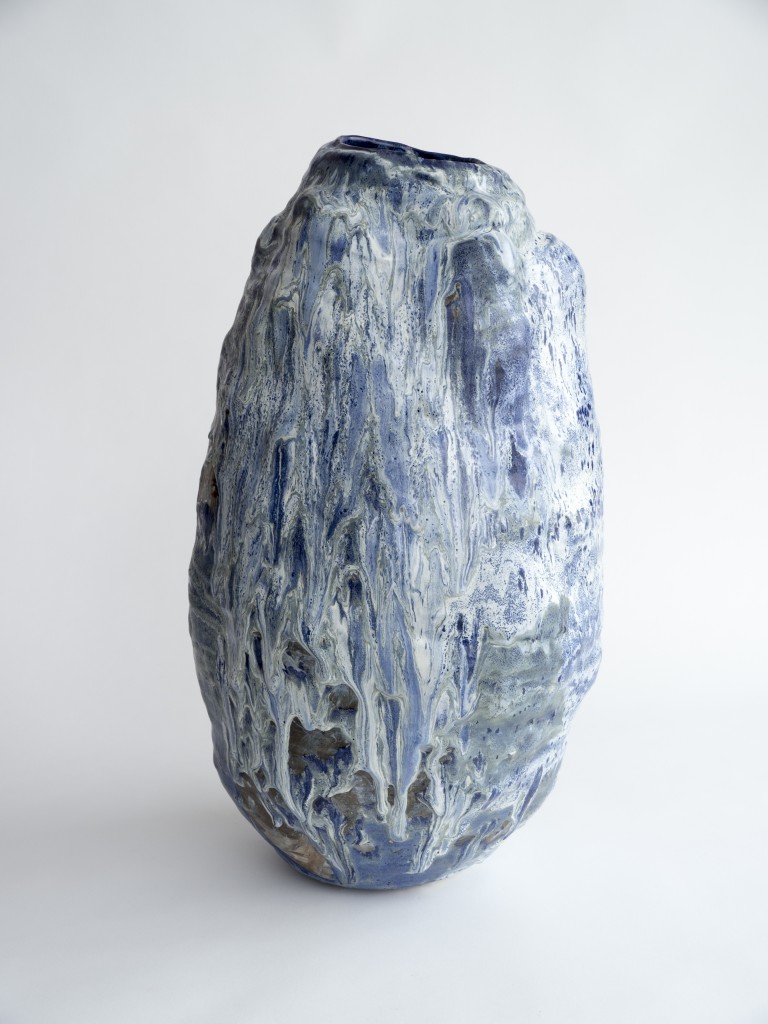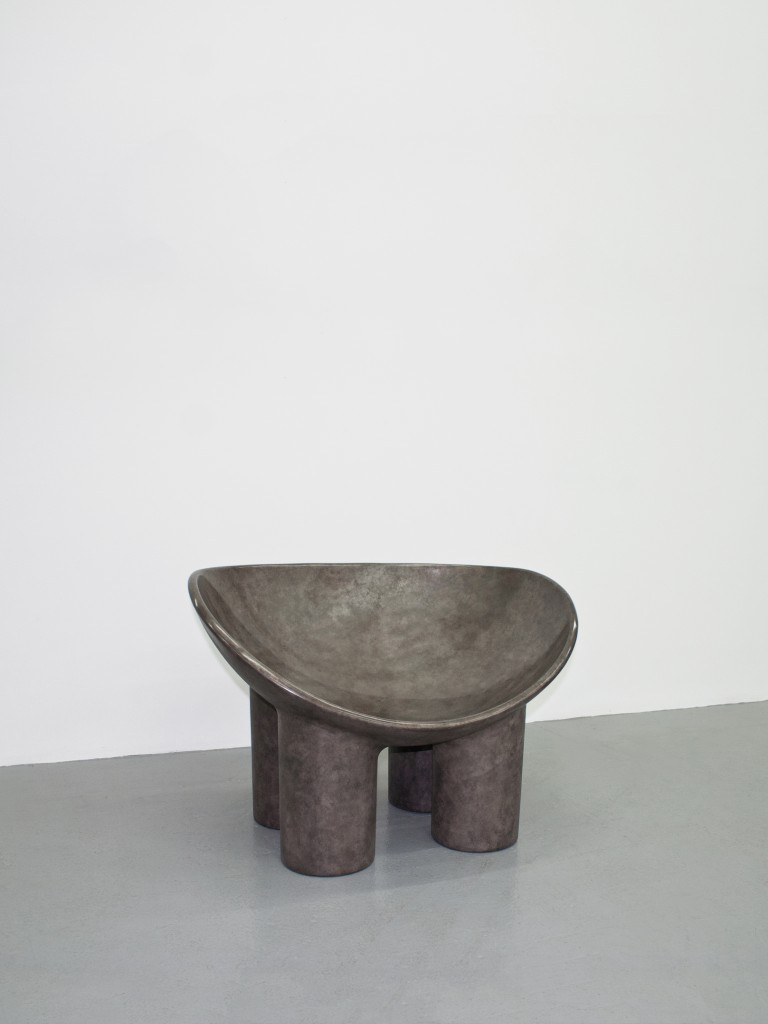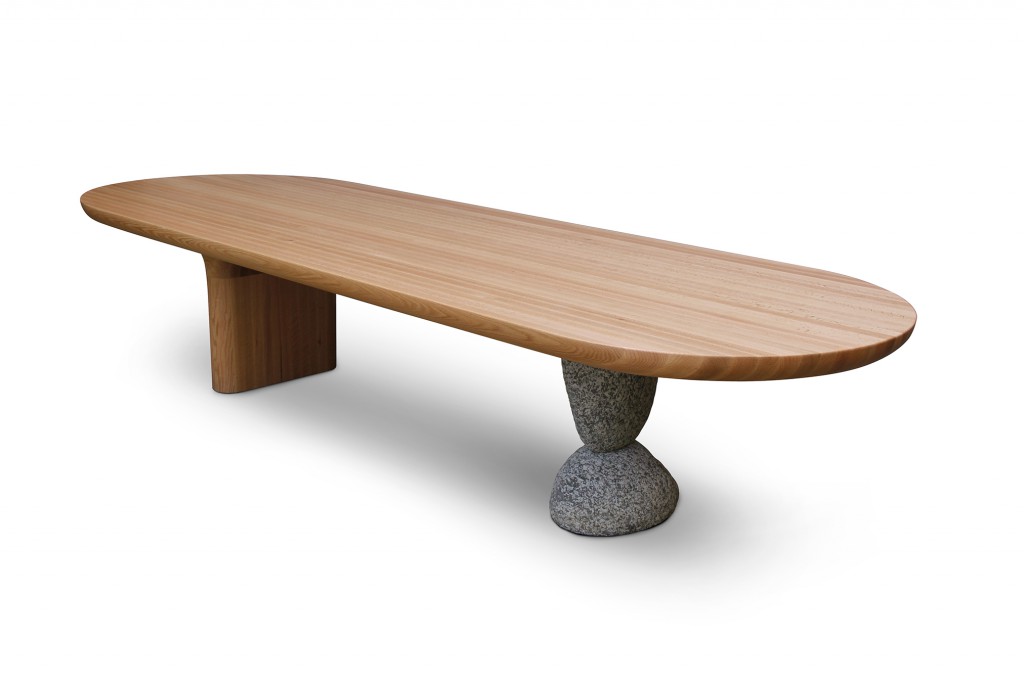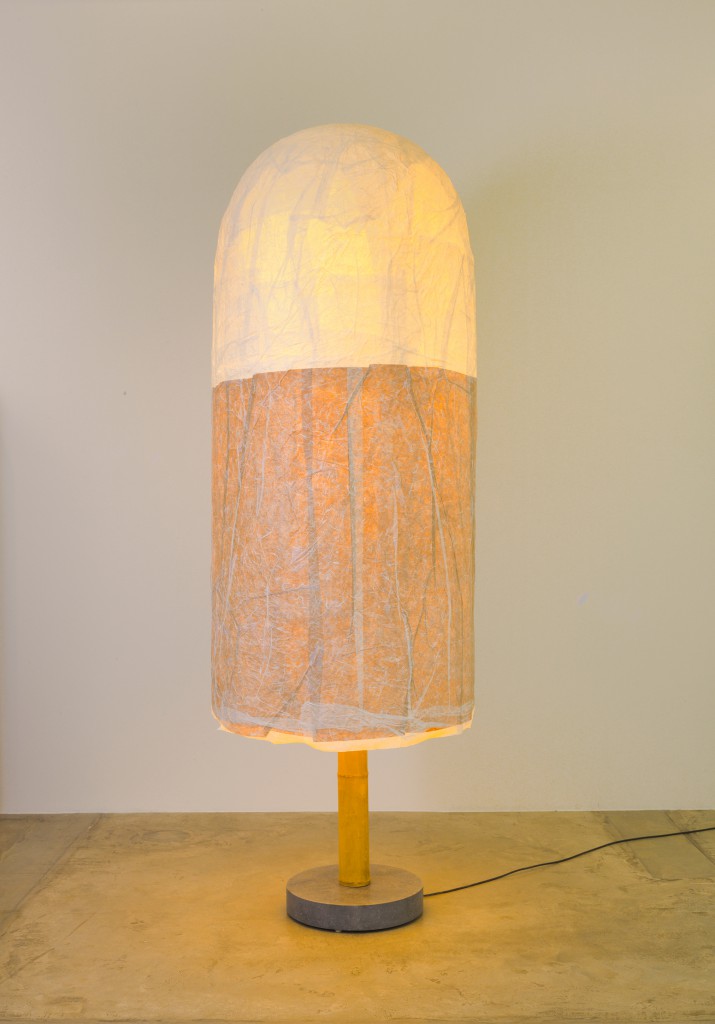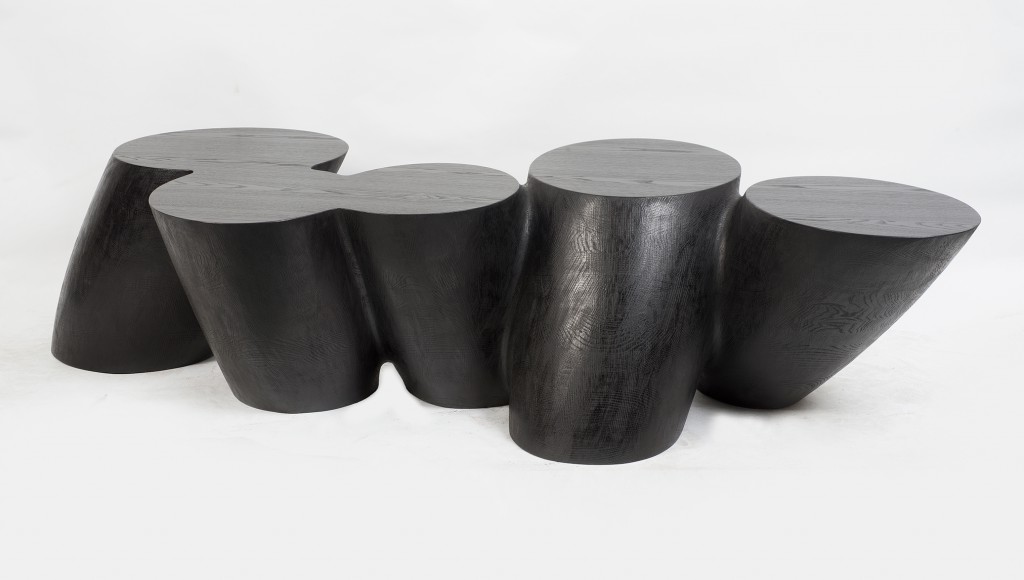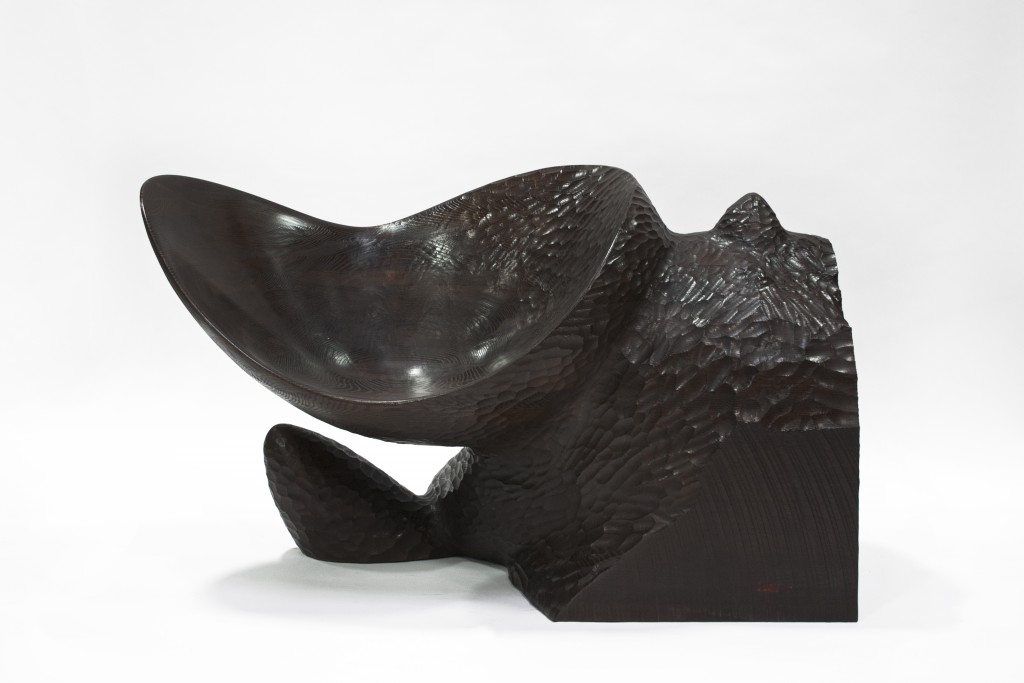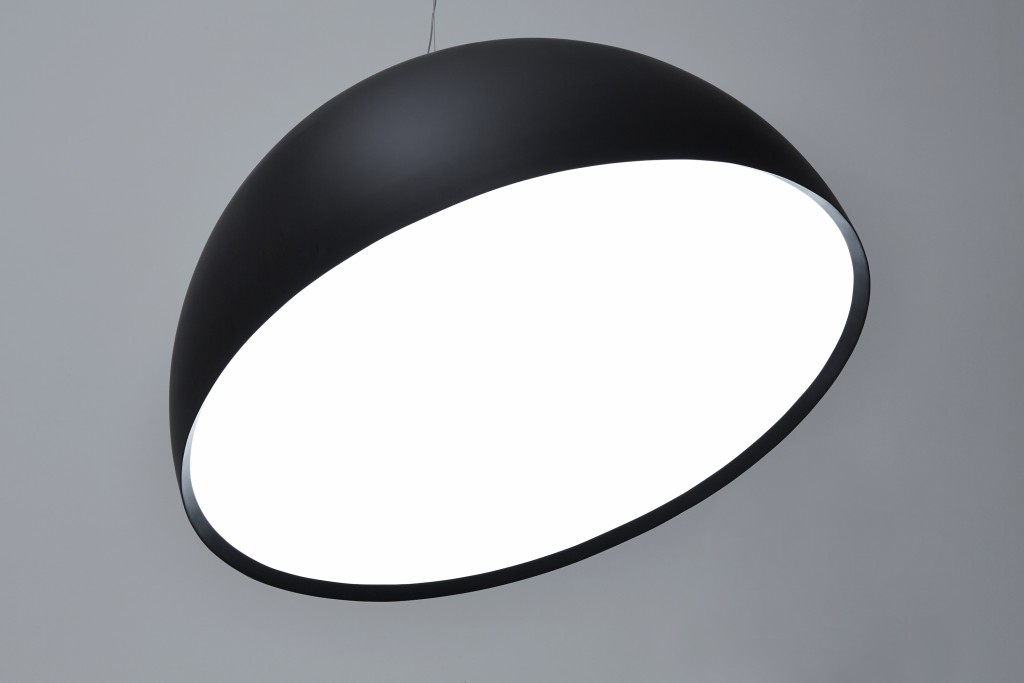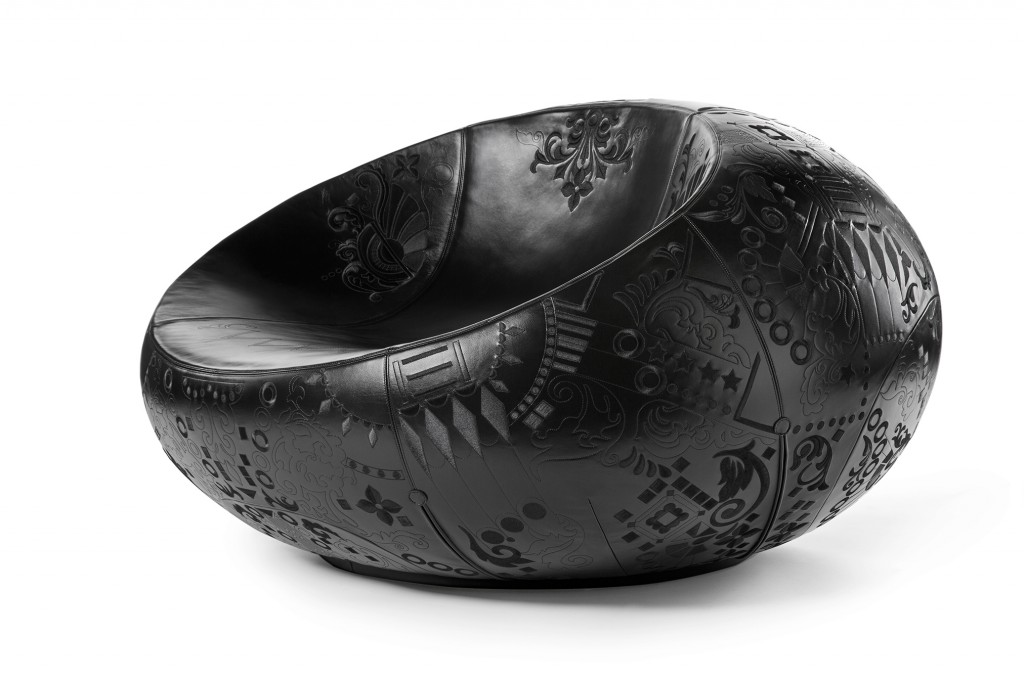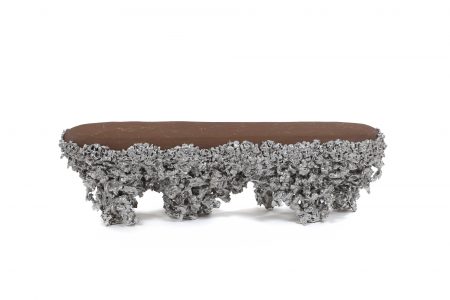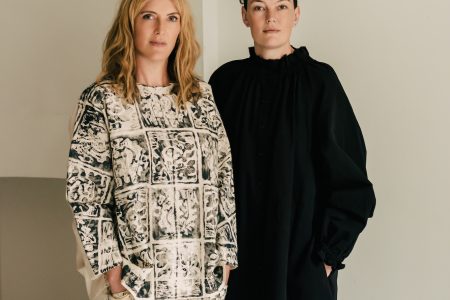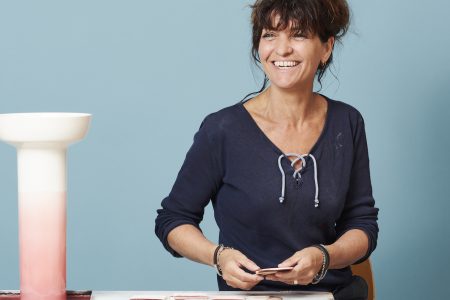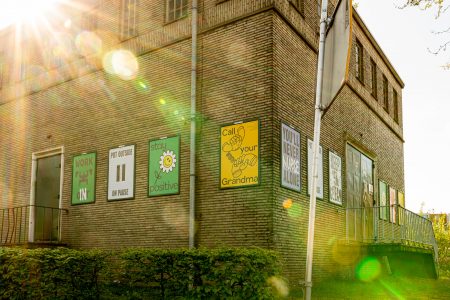Friedman Benda’s Asymmetrical Symmetry
Some 11 designers from four continents are included in Friedman Benda’s Design Miami/ 2016 exhibition that contrasts materials and volumes to stimulate perception.
Contrasts, opposites and asymmetries frame the work of 11 designers across Friedman Benda’s Asymmetrical Symmetry exhibition at Design Miami/ 2016.
A juxtaposition of non-traditional materials in the first space include a monumental dining table, armchairs and a mirror in Chris Schanck’s signature Alufoil technique. Misha Kahn shows a new series of cabinets made with woven grass, trash, car parts and sea glass, produced in Swaziland. The Campana Brothers’ bi-level marquetry table, and a pair of pink Pirarucu armchairs, complete the room.
With earthy tones and natural materials, the second area explores volumes. British designer Faye Toogood‘s Roly-Poly dining chairs in silver nitrate bronze are paired with Korean designer Byung Hoon Choi‘s minimalist sculptural dining table. Now 84, American design legend Wendell Castle shows the first in his new Block series that references classical sculpture of the Renaissance period. Embroidered leather chairs by Marcel Wanders, organic ceramic vessels by Adam Silverman, lamps made of volcanic lava by gt2P, a rice paper and bamboo floor lamp by Andrea Branzi, and a hand-spun aluminium dome chandelier by Paul Cocksedge complete the room.
Brooklyn-based Calico Wallpaper unify the exhibition with a site-specific print of their Aurora wallpaper designed to play with perception.
